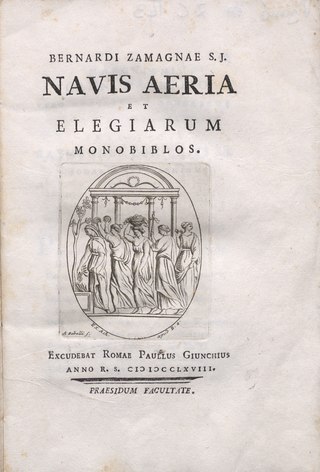Related Research Articles

Edward Waring was a British mathematician. He entered Magdalene College, Cambridge as a sizar and became Senior wrangler in 1757. He was elected a Fellow of Magdalene and in 1760 Lucasian Professor of Mathematics, holding the chair until his death. He made the assertion known as Waring's problem without proof in his writings Meditationes Algebraicae. Waring was elected a Fellow of the Royal Society in 1763 and awarded the Copley Medal in 1784.

Nevil Maskelyne was the fifth British Astronomer Royal. He held the office from 1765 to 1811. He was the first person to scientifically measure the mass of the planet Earth. He created The Nautical Almanac, in full the British Nautical Almanac and Astronomical Ephemeris for the Meridian of the Royal Observatory at Greenwich using Tobias Mayer's corrections for Euler's Lunar Theory tables.

Thomas Bayes was an English statistician, philosopher and Presbyterian minister who is known for formulating a specific case of the theorem that bears his name: Bayes' theorem. Bayes never published what would become his most famous accomplishment; his notes were edited and published posthumously by Richard Price.

John Smeaton was an English civil engineer responsible for the design of bridges, canals, harbours and lighthouses. He was also a capable mechanical engineer and an eminent physicist. Smeaton was the first self-proclaimed "civil engineer", and is often regarded as the "father of civil engineering". He pioneered the use of hydraulic lime in concrete, using pebbles and powdered brick as aggregate. Smeaton was associated with the Lunar Society.
The year 1824 in science and technology involved some significant events, listed below.
The year 1781 in science and technology involved some significant events.

The year 1768 in science and technology involved some significant events.
The year 1803 in science and technology involved some significant events.
The year 1788 in science and technology involved some significant events.
The year 1764 in science and technology involved some significant events.
The year 1750 in science and technology involved some significant events.

John Canton was a British physicist. He was born in Middle Street Stroud, Gloucestershire, to a weaver, John Canton and Esther. As a schoolboy, he became the first person to determine the latitude of Stroud, while making a sundial. The sundial caught the attention of many, including Dr Henry Miles, a Stroud-born Fellow of the Royal Society. Miles encouraged Canton to leave Gloucestershire to become a trainee teacher for Samuel Watkins, the headmaster of a Nonconformist school in Spital Square, London, with whom he ultimately entered into partnership.

The sunrise problem can be expressed as follows: "What is the probability that the sun will rise tomorrow?" The sunrise problem illustrates the difficulty of using probability theory when evaluating the plausibility of statements or beliefs.

William Henry was an English chemist. He was the son of Thomas Henry and was born in Manchester England. He developed what is known today as Henry's Law.

John Hellins FRS was a British autodidact, schoolteacher, mathematician, astronomer and country parson.

William Morgan, FRS was a British physician, physicist and statistician, who is considered the father of modern actuarial science. He is also credited with being the first to record the "invisible light" produced when a current is passed through a partly evacuated glass tube: "the first x-ray tube".
Events from the year 1763 in Great Britain.
Edward Stone (1702–1768) was a Church of England cleric who discovered the active ingredient of aspirin.
Samuel Dunn (1723–1794) was a British mathematician, teacher, cartographer and amateur astronomer.
"An Essay Towards Solving a Problem in the Doctrine of Chances" is a work on the mathematical theory of probability by Thomas Bayes, published in 1763, two years after its author's death, and containing multiple amendments and additions due to his friend Richard Price. The title comes from the contemporary use of the phrase "doctrine of chances" to mean the theory of probability, which had been introduced via the title of a book by Abraham de Moivre. Contemporary reprints of the essay carry a more specific and significant title: A Method of Calculating the Exact Probability of All Conclusions Founded on Induction.
References
- ↑ "A Letter from the Late Reverend Mr. Thomas Bayes, F.R.S. to John Canton, M.A. and F.R.S." (PDF). 1763-11-24. Retrieved 2012-03-01.
- ↑ Bayes, Thomas (1764). "An Essay towards solving a Problem in the Doctrine of Chances. By the late Rev. Mr. Bayes, communicated by Mr. Price, in a letter to John Canton" (PDF). Philosophical Transactions of the Royal Society . 53. London: 370–418. doi: 10.1098/rstl.1763.0053 . Archived from the original (PDF) on 2011-04-10. Retrieved 2011-10-15. Read December 23, 1763.
- ↑ McGrayne, Sharon Bertsch (2011). The Theory That Would Not Die . New Haven: Yale University Press. ISBN 978-0-300-16969-0.
- ↑ Euler, L. (1763). "Theoremata arithmetica nova methodo demonstrata". Novi commentarii academiae scientiarum imperialis Petropolitanae. 8. Saint-Petersburg: 74–104.
- ↑ "An Account of the Success of the Bark of the Willow in the Cure of Agues. In a Letter to the Right Honourable George Earl of Macclesfield, President of R.S. from the Rev. Mr. Edmund [sic.] Stone, of Chipping-Norton in Oxfordshire". Philosophical Transactions. 53. London: Royal Society. 1763.
- ↑ "Copley Medal | British scientific award". Encyclopedia Britannica. Retrieved 21 July 2020.